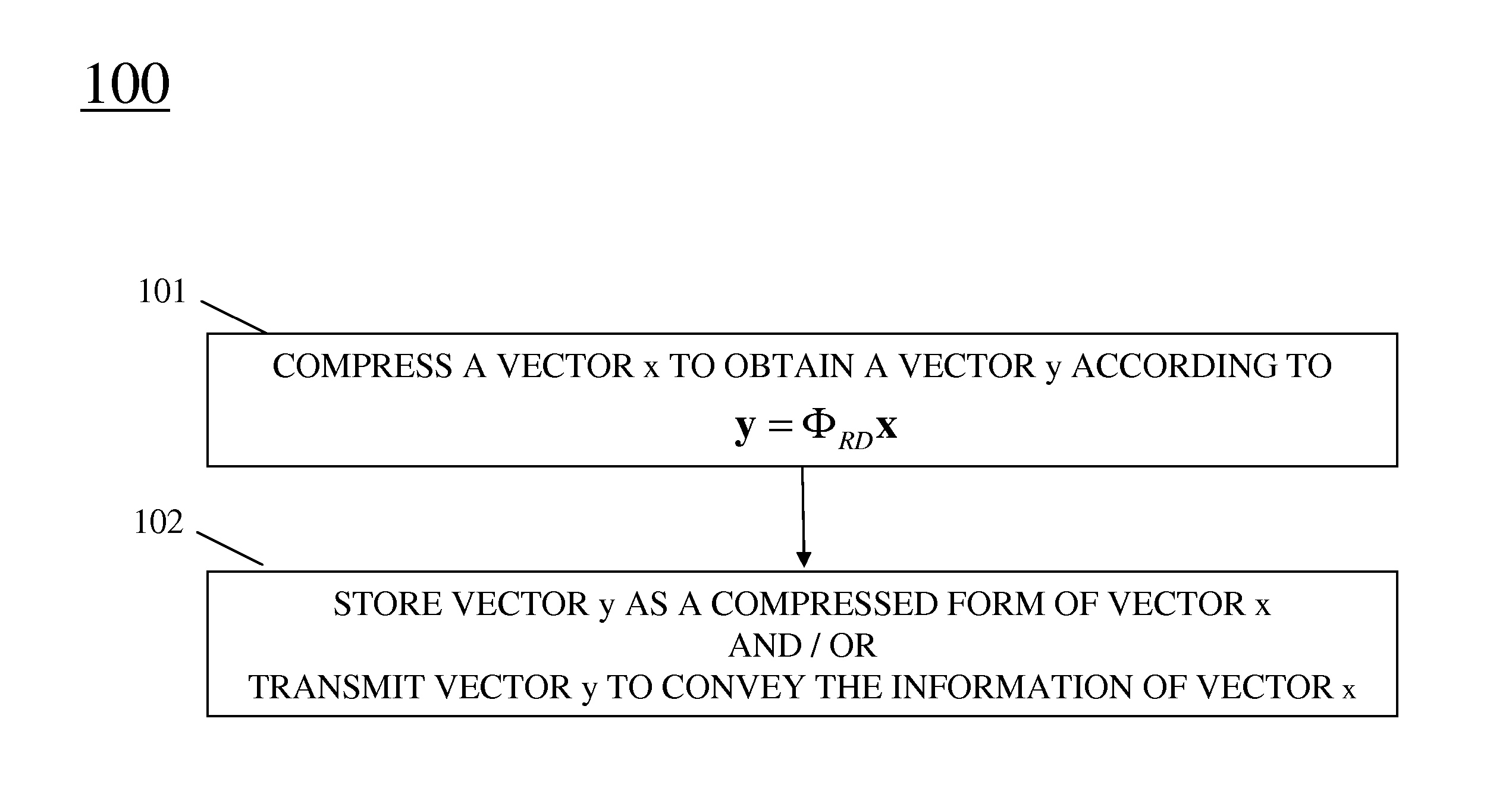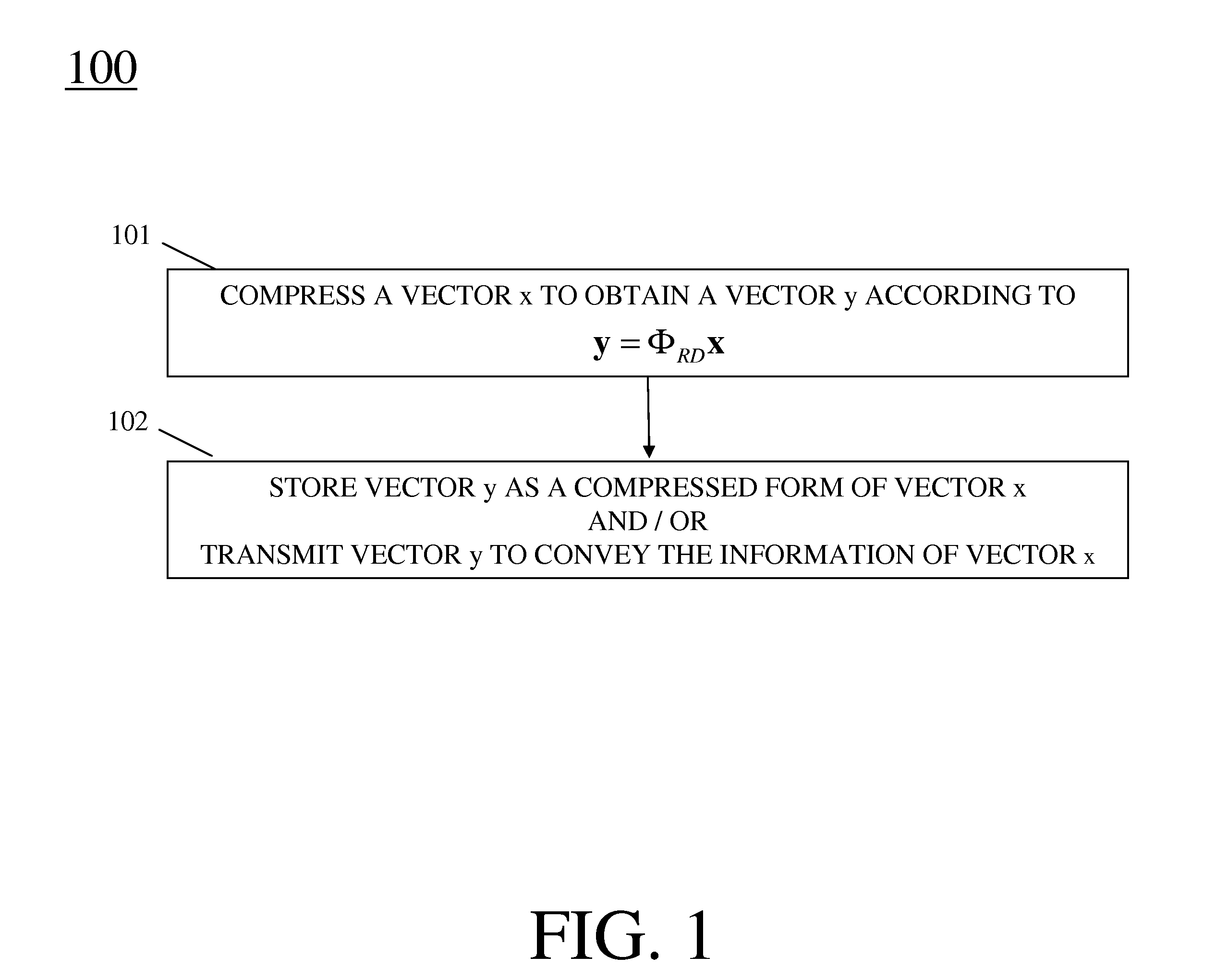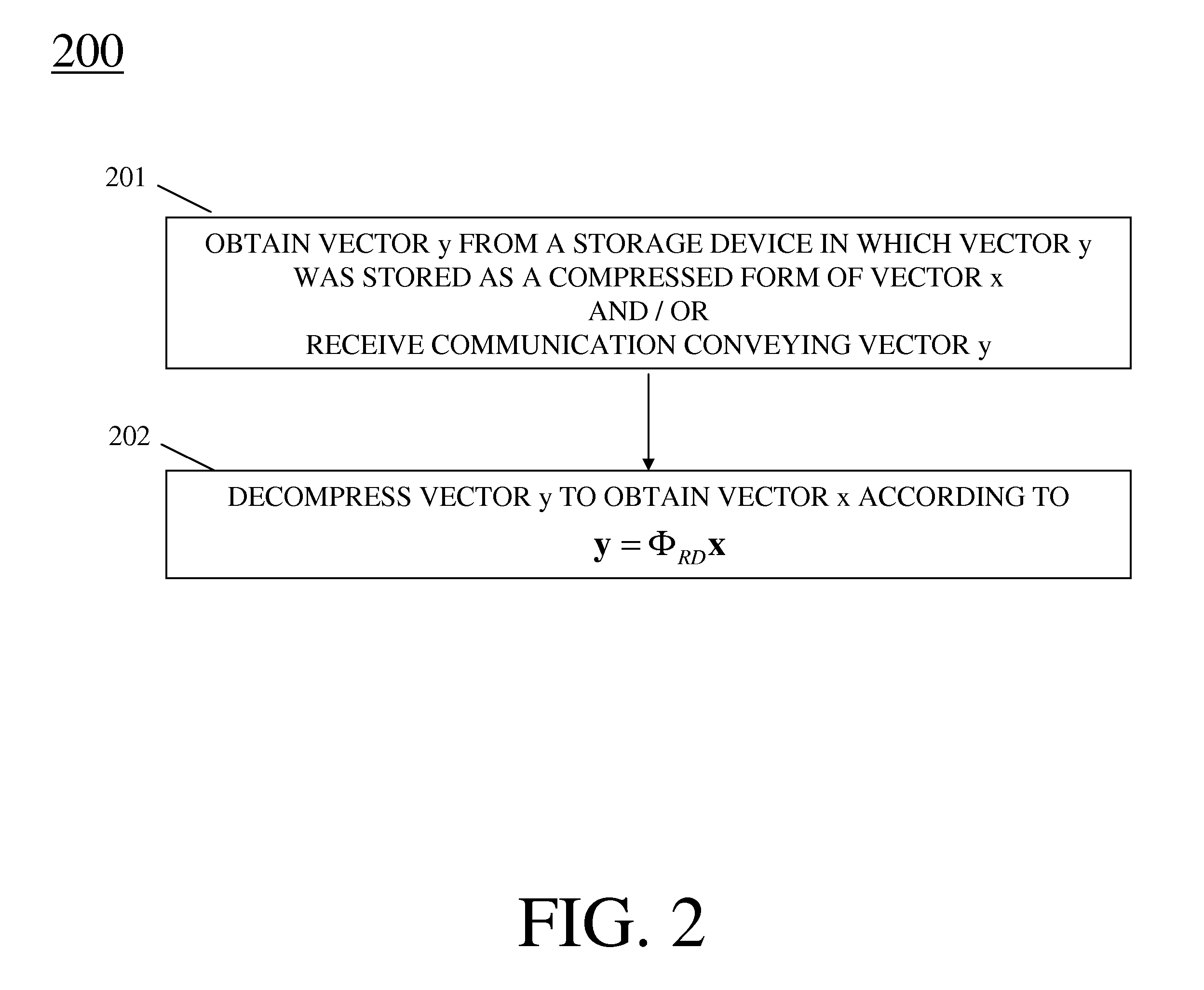Method And Apparatus For Compressive Sensing With Reduced Compression Complexity
a compression sensing and compression complexity technology, applied in the field of compression sensing techniques, can solve the problems of high compression complexity and complexity of computing y from x, and achieve the effect of reducing compression complexity
- Summary
- Abstract
- Description
- Claims
- Application Information
AI Technical Summary
Benefits of technology
Problems solved by technology
Method used
Image
Examples
Embodiment Construction
[0018]To provide a greater degree of detail in making and using various aspects of the present invention, a description of our approach to reducing compression complexity and a description of certain, quite specific, embodiments follows for the sake of example.
[0019]The approach described herein is able to reduce the complexity of a compressive sensing scheme proposed by Caldebank et. al [1,2], while not sacrificing performance. In particular, our approach is able to achieve a significantly smaller (i.e., approximately 30% less) compression complexity (the complexity of computing y from x) while exhibiting the same performance.
[0020]A compressive sensing scheme is organized as follows. We would like to compress a vector x=(x1, . . . , xN) that has only a few nonzero components. In other words, it is a priory known that only few entries xj of x are not zeros. In order of doing this we compute the vector
y=Φx, (1)
where Φ is an M×N compressive sensing matrix. Typically, N is much large...
PUM
 Login to View More
Login to View More Abstract
Description
Claims
Application Information
 Login to View More
Login to View More - R&D
- Intellectual Property
- Life Sciences
- Materials
- Tech Scout
- Unparalleled Data Quality
- Higher Quality Content
- 60% Fewer Hallucinations
Browse by: Latest US Patents, China's latest patents, Technical Efficacy Thesaurus, Application Domain, Technology Topic, Popular Technical Reports.
© 2025 PatSnap. All rights reserved.Legal|Privacy policy|Modern Slavery Act Transparency Statement|Sitemap|About US| Contact US: help@patsnap.com



